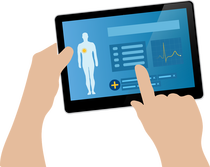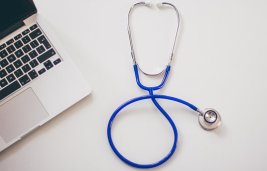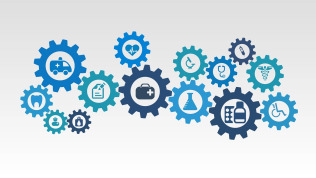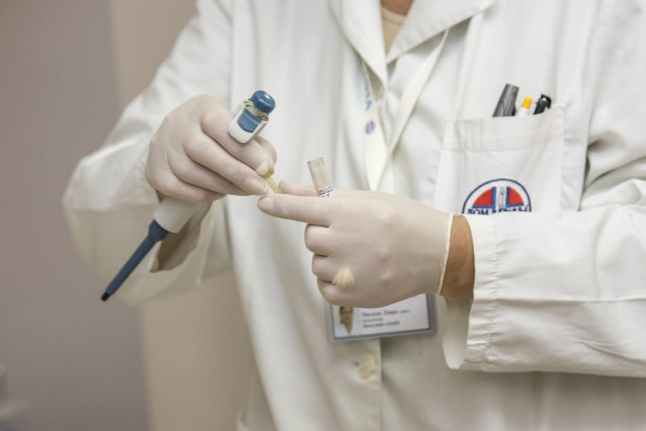
The healthcare data explosion has prompted thorny debates over data ownership and access. Obviously, patients have a vested interest in having access to their own personal health history, but the data holds value for other stakeholders as well. For example, providers need a complete patient picture to provide personalized care, and researchers want to aggregate and analyze data to establish trends and predictive insights.

 Science and medicine continue to advance at an astonishing rate thanks to technological innovation. We have already seen digital health solutions that promise to transform patient care in our lifetime. While these advancements are indeed groundbreaking for the healthcare industry, there are still basic day-to-day care processes in hospitals across the country ripe for improvement by applying technology.
Science and medicine continue to advance at an astonishing rate thanks to technological innovation. We have already seen digital health solutions that promise to transform patient care in our lifetime. While these advancements are indeed groundbreaking for the healthcare industry, there are still basic day-to-day care processes in hospitals across the country ripe for improvement by applying technology. As we celebrate
As we celebrate  This is a watershed moment in healthcare. New technologies are constantly in development to help treat and prevent previously incurable conditions, and improve current processes. From leadless pacemakers to
This is a watershed moment in healthcare. New technologies are constantly in development to help treat and prevent previously incurable conditions, and improve current processes. From leadless pacemakers to  As an anesthesiologist, my goal is to make the hospital a better, more efficient place to work so that I may provide the best possible care to my patients from the moment they come under my supervision. As part of this, improving a patient’s health record – and our access to it – by using effective mobile technology is an important step to providing holistic care. With nearly half of a
As an anesthesiologist, my goal is to make the hospital a better, more efficient place to work so that I may provide the best possible care to my patients from the moment they come under my supervision. As part of this, improving a patient’s health record – and our access to it – by using effective mobile technology is an important step to providing holistic care. With nearly half of a  Care delivery best practices are constantly changing to optimize efficiency and safety, and look considerably different compared to just a decade ago. The digital healthcare transformation has ushered in promising opportunities to use technology to
Care delivery best practices are constantly changing to optimize efficiency and safety, and look considerably different compared to just a decade ago. The digital healthcare transformation has ushered in promising opportunities to use technology to 
 Across the country, health care organizations are re-envisioning how to deliver care. Major health systems like Lahey Health are seeking out new solutions that allow us to transition from episodic care to wellness – minimizing the impact of disease and managing the health of populations more effectively. At the same time, patients continue to demand more from their care providers. We now must bring care to patients at the time and location of their choosing, and this is the beginning of the consumerization of healthcare. These shifts require technology that can provide more comprehensive and context-aware views of patients’ data, support for collaborative care across the continuum, and allow health systems to scale their delivery of care in new ways. Consequently,
Across the country, health care organizations are re-envisioning how to deliver care. Major health systems like Lahey Health are seeking out new solutions that allow us to transition from episodic care to wellness – minimizing the impact of disease and managing the health of populations more effectively. At the same time, patients continue to demand more from their care providers. We now must bring care to patients at the time and location of their choosing, and this is the beginning of the consumerization of healthcare. These shifts require technology that can provide more comprehensive and context-aware views of patients’ data, support for collaborative care across the continuum, and allow health systems to scale their delivery of care in new ways. Consequently,  For over a year, the US has spent much of its time wondering who would be the next Commander-in-Chief, and what the implications would be with a Hillary Clinton or a Donald Trump presidency. Now that we have our answer – that Donald Trump will be leading the nation for at least the next four years – people across all industries are wondering how a new administration will impact their business.
For over a year, the US has spent much of its time wondering who would be the next Commander-in-Chief, and what the implications would be with a Hillary Clinton or a Donald Trump presidency. Now that we have our answer – that Donald Trump will be leading the nation for at least the next four years – people across all industries are wondering how a new administration will impact their business. This week, I had the privilege to present at the Energy and Commerce Subcommittee on Commerce, Manufacturing and Trade Hearing that took place in Washington, DC. As part of the
This week, I had the privilege to present at the Energy and Commerce Subcommittee on Commerce, Manufacturing and Trade Hearing that took place in Washington, DC. As part of the